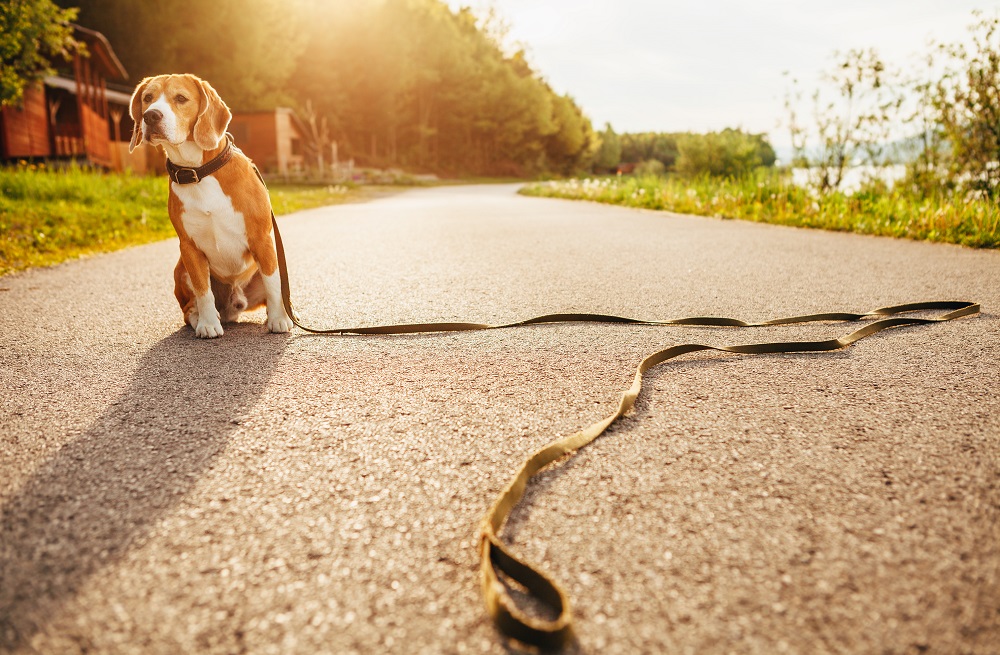Tips for searching for your missing pet
Storm season also results in an influx of stray animals in pounds and shelters across Queensland.

Losing a pet is a very distressing time for owners, in the event your pet goes missing thoroughly search your home and check under buildings, inside sheds, and other dark spots.
The Animal Welfare League Queensland (ALWQ) recommends these seven steps when looking for a lost pet.
Step one
Knock on doors and ask to search neighbouring properties. Ask your neighbours, family and friends to help you search the places that might attract your pet. Think about nearby friends’ homes, parks, homes with other pets, buildings with dumpsters, food establishments, which your pet might like.
Step two
Make simple fliers to distribute to your neighbours and giant neon posters for street poles or in local shops. Produce a flier on-line. Include lost cat/dog, a photo of your pet, your phone number and any unique features. Check with your Council on laws related to displaying community posters.
Step three
Contact all your local shelters and pounds and vet clinics on the first day, and visit to view all cats or dogs in the pound/shelter every 1-3 days.
Step four
Contact the microchip company your pet is registered with to check the details registered with them are correct.
Step five
Utilise local lost and found and community web and social media sites to list your lost pet like Lost pet finders.
Step six
Pets are often found weeks or months after they go missing. Using all these search steps will give you the best chance of being reunited.
Step seven
When you find your pet thank the people who helped you search, share your happy news with neighbours, vets and businesses and take down posters. Help prevent losing your pet again by an up-to-date microchip, collar with current phone number, desexing and effective containment on your property.
Related topics
Things to note
The information in this article has been prepared for general information purposes only and is not intended as legal advice or specific advice to any particular person. Any advice contained in the document is general advice, not intended as legal advice or professional advice and does not take into account any person’s particular circumstances. Before acting on anything based on this advice you should consider its appropriateness to you, having regard to your objectives and needs.
Insurance Products (excluding Travel Insurance) are issued by RACQ Insurance Limited ABN 50 009 704 152 (RACQI) and arranged by its agent, RACQ Distribution Services Pty Ltd (RDS) ABN 35 116 361 650, AFSL 567130 and RDS' authorised representatives (including RACQ Operations Pty Ltd ABN 80 009 663 414, AR No. 234978 (RACQO). Conditions, limits and exclusions apply. RDS and RACQO are in the RACQ group of companies. One of the companies in the RACQ group of companies has a minority shareholding in RACQI.
RDS and RACQO have not taken your personal objectives, circumstances or needs into account when preparing advice regarding insurance products and you will need to consider whether the advice is appropriate for you. Read the Product Disclosure Statement (PDS) and any applicable Supplementary PDS before making a purchase decision on this product. You can also access our Target Market Determinations on this website. RDS receives a commission from RACQI for the policies it arranges. RACQO receives fees paid for services it provides to RDS. Further details about remuneration are available on request prior to purchasing.
Banking and loan products issued by Members Banking Group Limited ABN 83 087 651 054 AFSL/Australian credit licence 241195 trading as RACQ Bank. Terms, conditions, fees, charges and lending policies apply. This is general advice only and may not be right for you. This information does not take your personal objectives, circumstances or needs into account. Read the disclosure documents for your selected product or service, including the Financial Services Guide and the Terms and Conditions, and consider if appropriate for you before deciding.
Except for RACQ Bank, any RACQ entity referred to on this page is not an authorised deposit-taking institution for the purposes of the Banking Act 1959 (Cth). That entity’s obligations do not represent deposits or other liabilities of RACQ Bank. RACQ Bank does not guarantee or otherwise provide assurance in respect of the obligations of that entity, unless noted otherwise.
RACQ Bank subscribes to the Customer Owned Banking Code of Practice which establishes higher standards than the law requires. The Code reflects modern consumer expectations and developments in approaches to issues such as consumer vulnerability, guarantors, and supporting customers through financial hardship. Please read our Customer Owned Banking Code of Practice page for more information.
RACQ Operations Pty Ltd (ABN 80 009 663 414 AR 000234978) and Members Travel Group Pty Ltd (ABN 45 144 538 803 AR 000432492) are acting as an Authorised Representative of the issuer of the insurance, Tokio Marine & Nichido Fire Insurance Co., Ltd. (ABN 80 000 438 291 AFSL 246 548). Any advice set out above is general in nature only, and does not take into account your objectives, financial situation or needs. Before purchasing any travel products, please consider the RACQ Travel Insurance Product Disclosure Statement (PDS) and the Target Market Determinations (TMDs) that apply to these products. Whilst the PDS outlines the Terms and Conditions of these products, the TMDs outline the intended class of customers that comprise the target market for these travel products. This will allow you to consider which products best suit your objectives, financial situation and needs and consider the products appropriateness to your personal circumstances. TMDs also outline matters involving the distribution and the review of these products. The PDS, Supplementary PDS and TMDs for each travel product can be found here.
